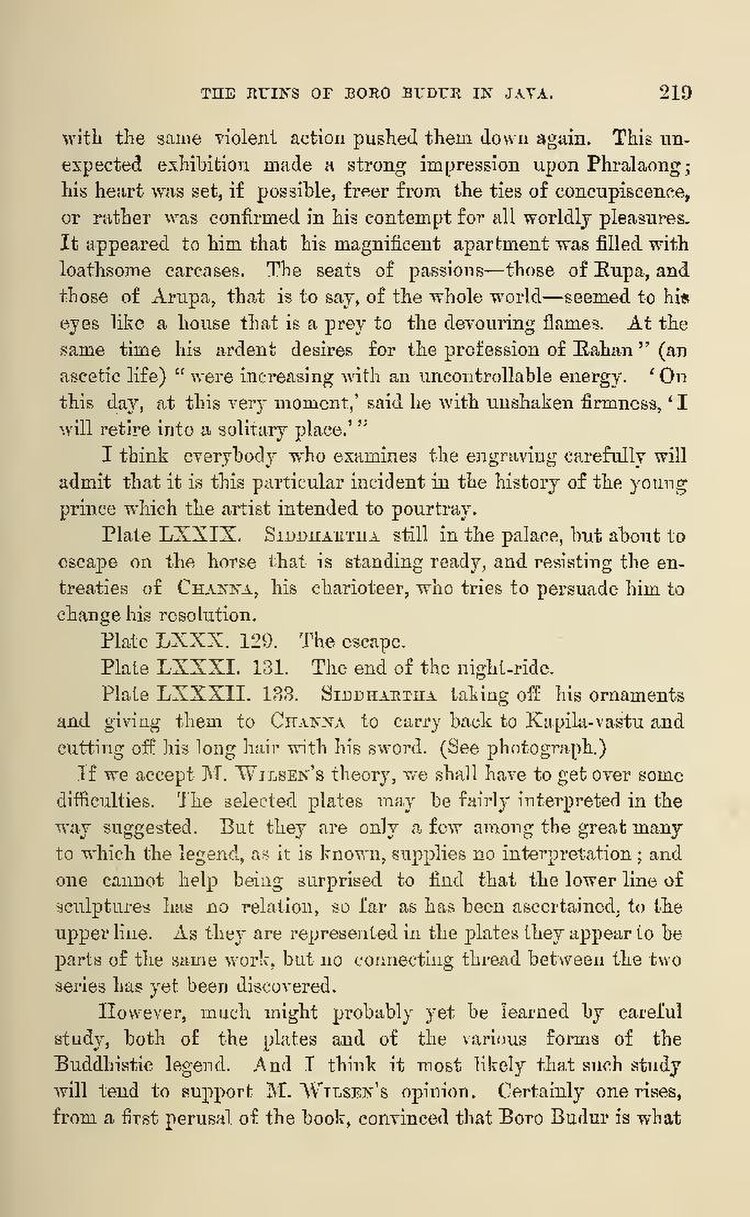with the same violent action pushed them down again. This unexpected exhibition made a strong impression upon Phralaong; his heart was set, if possible, freer from the ties of concupiscence, or rather was confirmed in his contempt for all worldly pleasures. It appeared to him that his magnificent apartment was filled with loathsome carcases. The seats of passions—those of Rupa, and those of Arupa, that is to say, of the whole world—seemed to his eyes like a house that is a prey to the devouring flames. At the same time his ardent desires for the profession of Rahan" (an ascetic life) "were increasing with an uncontrollable energy. 'On this day, at this very moment,' said he with unshaken firmness, 'I will retire into a solitary place.'"
I think everybody who examines the engraving carefully will admit that it is this particular incident in the history of the young prince which the artist intended to pourtray.
Plate LXXIX. SIDDHARTHA still in the palace, but about to cscape on the horse that is standing ready, and resisting the entreaties of CHANNA, his charioteer, who tries to persuade him to change his resolution.
Plate LXXX. 129. The escape.
Plate LXXXI. 131. The end of the night-ride.
Plate LXXXII. 188. SIDDHARTHA Laking off his ornaments and giving them to CHANNA to carry back to Kupila-vastu and cutting off his long hair with his sword. (See photograph.)
If we accept M. WILSEN's theory, we shall have to get over some difficulties. The selected plates may be fairly interpreted in the way suggested. But they are only a few among the great many to which the legend, as it is known, supplies no interpretation; and one cannot help being surprised to find that the lower line of sculptures has no relation, so far as has been ascertained, to the upper line. As they are represented in the plates they appear to be parts of the same work, but no connecting thread between the two series has yet been discovered.
However, much might probably yet be learned by careful study, both of the plates and of the various forms of the Buddhistic legend. And I think it most likely that such study will tend to support M. WILSEN's opinion. Certainly one rises, from a first perusal of the book, convinced that Boro Budur is what
